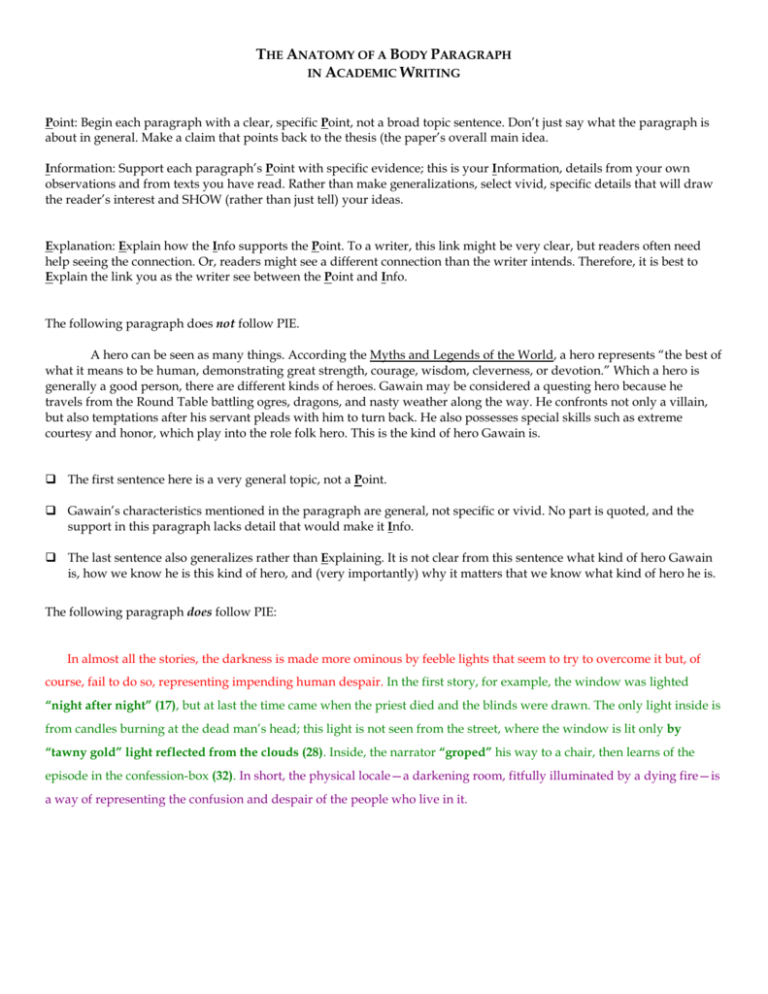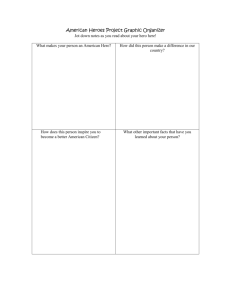A hero can be seen as many things
advertisement

THE ANATOMY OF A BODY PARAGRAPH IN ACADEMIC WRITING Point: Begin each paragraph with a clear, specific Point, not a broad topic sentence. Don’t just say what the paragraph is about in general. Make a claim that points back to the thesis (the paper’s overall main idea. Information: Support each paragraph’s Point with specific evidence; this is your Information, details from your own observations and from texts you have read. Rather than make generalizations, select vivid, specific details that will draw the reader’s interest and SHOW (rather than just tell) your ideas. Explanation: Explain how the Info supports the Point. To a writer, this link might be very clear, but readers often need help seeing the connection. Or, readers might see a different connection than the writer intends. Therefore, it is best to Explain the link you as the writer see between the Point and Info. The following paragraph does not follow PIE. A hero can be seen as many things. According the Myths and Legends of the World, a hero represents “the best of what it means to be human, demonstrating great strength, courage, wisdom, cleverness, or devotion.” Which a hero is generally a good person, there are different kinds of heroes. Gawain may be considered a questing hero because he travels from the Round Table battling ogres, dragons, and nasty weather along the way. He confronts not only a villain, but also temptations after his servant pleads with him to turn back. He also possesses special skills such as extreme courtesy and honor, which play into the role folk hero. This is the kind of hero Gawain is. The first sentence here is a very general topic, not a Point. Gawain’s characteristics mentioned in the paragraph are general, not specific or vivid. No part is quoted, and the support in this paragraph lacks detail that would make it Info. The last sentence also generalizes rather than Explaining. It is not clear from this sentence what kind of hero Gawain is, how we know he is this kind of hero, and (very importantly) why it matters that we know what kind of hero he is. The following paragraph does follow PIE: In almost all the stories, the darkness is made more ominous by feeble lights that seem to try to overcome it but, of course, fail to do so, representing impending human despair. In the first story, for example, the window was lighted “night after night” (17), but at last the time came when the priest died and the blinds were drawn. The only light inside is from candles burning at the dead man’s head; this light is not seen from the street, where the window is lit only by “tawny gold” light reflected from the clouds (28). Inside, the narrator “groped” his way to a chair, then learns of the episode in the confession-box (32). In short, the physical locale—a darkening room, fitfully illuminated by a dying fire—is a way of representing the confusion and despair of the people who live in it.







